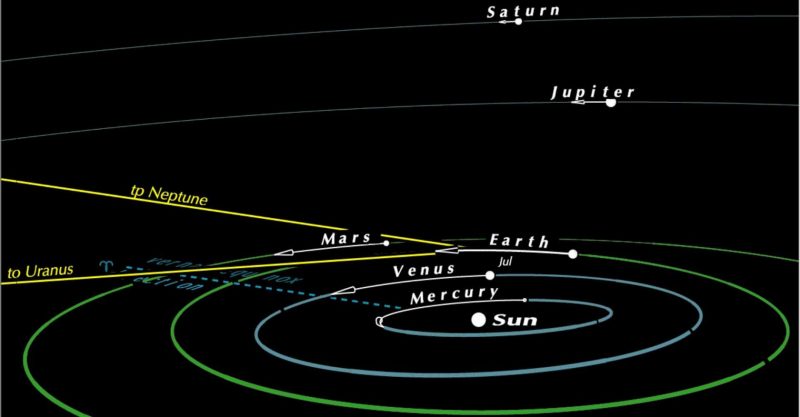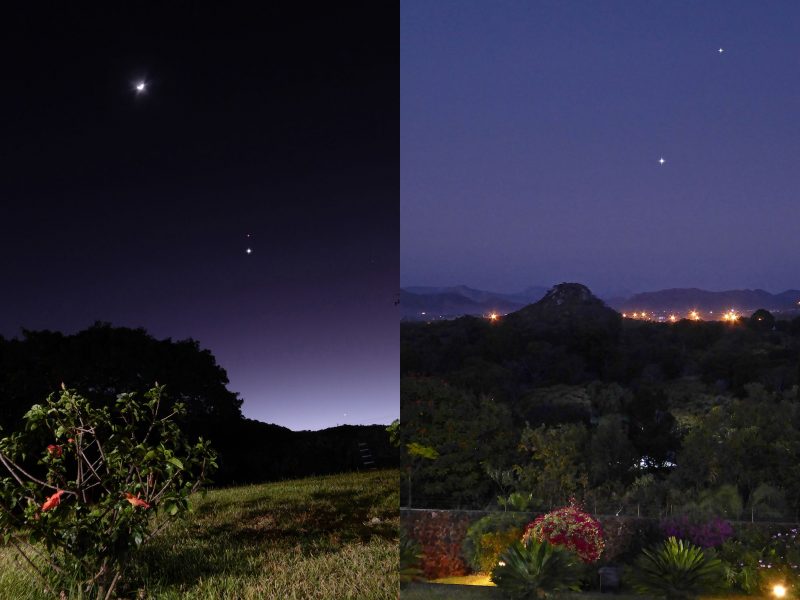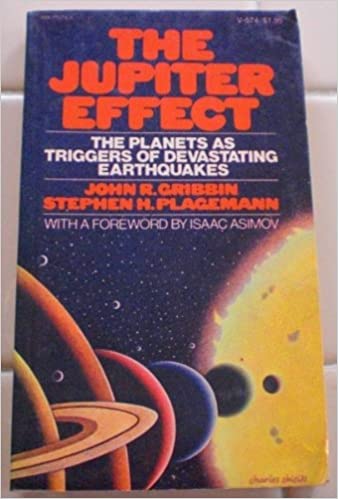
Originally published July 21, 2020, at Guy Ottewell’s blog. Reprinted with permission. Don’t miss Guy’s new book : “Venus, A Longer View.”
There’s been discussion among the commenters at my blog about a current alignment of planets and about whether its tidal stress on Earth could have effects, such as increased volcanism. So I thought I’d show where the planets are in July 2020.
The ecliptic heliocentric longitudes of the planets at July 21 are:
Mercury 349
Venus 328
Earth 299
Mars 328
Jupiter 293
Saturn 299
Uranus 38
Neptune 349
So, yes – at present – some of the planets happen to be roughly on a spoke outward from the sun.

The tidal force of body A on body B is the difference between its gravitational pull on the side of B nearer to it and on the side farther. That’s why there is a high tide on the side of Earth nearest to the moon and also on the opposite side.
Let’s give some distances in kilometers.
The distance between the centers of moon and Earth is 384,000 (average, approximate). The radius of Earth is 6,378. So the moon’s distances to the near and far sides are 384,000-6,378 = 377,622, and 384,000+6,378 = 390,378. In other words, the difference between those is about 3 percent.
The distance of Jupiter from Earth is about 780,000,000. So the distances from Jupiter to the nearer and farther sides of Earth are 780,000,000 minus and plus 6,378. The difference between those is about 0.0016 percent. As you can see … this is a very, very small effect, not enough to cause an uptick in earthly volcanoes.
There have been several planet-alignment scares. “The Jupiter Effect” (1974), by John Gribbin and Stephen Plagemann, predicted that a line-up on March 10, 1982, would cause catastrophes including a great earthquake on the San Andreas Fault.
That did not happen.
There was some evidence that – around March 10, 1982 – global tides may have been 40 micrometers (40 thousandths of a millimeter) higher than average.
The only other part of the prediction that came true was that the book was a best-seller.

Bottom line: Yes, in July 2020 some of the planets happen to lie roughly along a spoke outward from the sun. No, there’s no reason to suspect an increase in earthquakes or volcanoes.











